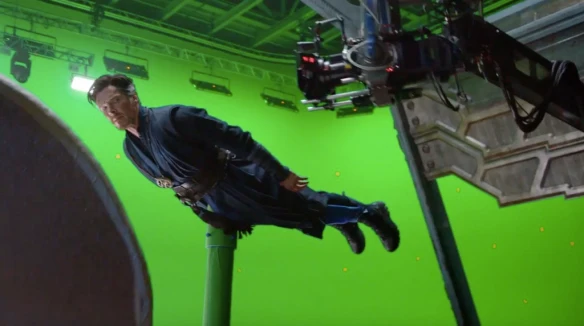VFX Artists Bring Attention to Working Conditions and Pay on Blockbuster Movies

by Dasun Panapitiya ‘24
 From the computer-generated Na’vi in James Cameron’s Avatar to nearly every scene in Anthony and Joe Russo’s Avengers: Endgame, visual effects (VFX) have garnered a reputation for contributing to box-office hits in modern entertainment. With history spanning back to the 1800s, VFX have been used in films and other mediums to create scenes that are impossible to do using practical effects. The most prominent example of VFX, computer-generated imagery (CGI), started being used in the late 1900s with films like Westworld and Star Wars. Now more than ever, CGI is being used in every medium of entertainment, from movies to video games. However, with the growth of VFX, comes controversy.
From the computer-generated Na’vi in James Cameron’s Avatar to nearly every scene in Anthony and Joe Russo’s Avengers: Endgame, visual effects (VFX) have garnered a reputation for contributing to box-office hits in modern entertainment. With history spanning back to the 1800s, VFX have been used in films and other mediums to create scenes that are impossible to do using practical effects. The most prominent example of VFX, computer-generated imagery (CGI), started being used in the late 1900s with films like Westworld and Star Wars. Now more than ever, CGI is being used in every medium of entertainment, from movies to video games. However, with the growth of VFX, comes controversy.
The impacts of VFX on the history of film are vast. Ever since movies like Jurassic Park came out, many directors have stated that they felt pressured to create similar types of blockbusters that focus on creating an experience for the viewer, rather than the story element of the movie. VFX only intensified this pressure as they allowed for more unrealistic things to happen. However, with CGI being cheaper to use compared to practical effects, filmmakers were able to replace expensive models and animatronics to save money in the budget.
VFX has improved in recent years, and has been used a lot more. The entertainment company, Marvel Studios, is a major player in the VFX area with consistent use of CGI in its movies and TV shows. According to the VFX company, Industrial Light & Magic, only 80 out of more than 2,700 scenes in Avengers: Infinity War are not VFX.
Recently, however, Marvel Studios has been caught in a controversy about its VFX and the people who work on it. Director Taika Waititi recently made negative comments about the CGI in his own movie, Thor: Love and Thunder. Waititi is receiving backlash over these comments, as they came at a time when VFX artists have started speaking out about poor working conditions and the exploitation of Marvel Studios
“Working on Marvel projects ends up being incredibly stressful, and this is a widely known issue throughout the VFX industry; it’s not specific to any one VFX house,” said an anonymous VFX artist who has worked on Marvel Projects.
Marvel also has a history of not paying VFX studios and artists enough for the time they spend doing these large-scale scenes. Money can mean everything for a VFX studio. The Oscar-winning VFX studio, Rhythm & Hues, filed for bankruptcy in 2013 and had to lay off almost 200 workers. Even recently, Moving Picture Company, the studio that worked on the 6th highest-grossing film, Spiderman: No Way Home, announced it was going to freeze pay rises for their workers through 2022. While no action has been taken yet, the internet has begun a movement to support the large-scale unionization of the VFX industry. With the support of the internet, many more VFX artists will start to speak out and perhaps eventually start to take action in order to get better working conditions.